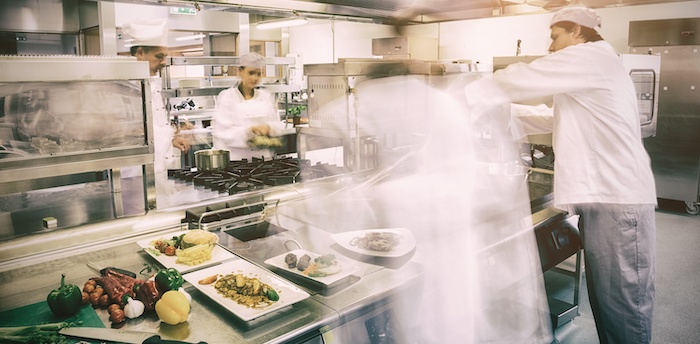We’ve done trend-predicting before, and although it’s great to stay abreast of the latest-and-greatest, it does leave one question...So what? Once you’ve got the trends figured out, what’s next? Knowing the latest trends and not knowing how to integrate them into your establishment is a recipe for disaster. In such a case, you’ve got the tools, but not the know-how. You’ll need both pieces of relevant information to make use of either of them. It can be hard to integrate trends into your bar or restaurant without losing your own identity, and even harder to do so in a way that doesn’t feel contrived or forced. Luckily, we’re here to help. At Provi, we’ve assembled a handy cheat sheet of ways you can successfully be on top of the latest trends.
Stay On Brand
If you read just one thing from our list, make it this one. Staying on brand is critical to the long-term success of any project, restaurant, bar, or otherwise. When it comes to utilizing trends in your restaurant, though, you want to do so in a way that doesn’t feel shoehorned. If you’re running an awesomely greasy diner, for example, maybe skip the whole rosé-for-brunch thing. Instead, be on the lookout for trends that fit what you’re already doing. As far as we’re concerned, it’s better to skip out on a trend altogether than to shoehorn it in where it may not belong.
Avoid Foundational Changes
Trends come and go so quickly that you'll want to adopt them in ways that keep you flexible. Don’t fundamentally alter your restaurant to fit into a certain trend or current flavor-of-the-week sensibility. Just by their nature, trends burn out too quickly for that to be a realistic strategy. For example, instead of overhauling your entire menu to fit a recently popular ingredient, perhaps run regular, on-trend specials. Simply put — don’t do anything you can’t easily undo.
Consider Food Costs
In the efforts of not jumping on every trend that rears its head, we present our next tip. When it comes to costs and logistics, some trends are just impossible for restaurants to execute. You shouldn’t go into the red on a cocktail or dish out of desperation to appear current or “in-the-loop.” If a trend doesn’t make sense financially for your establishment, skip it over. There’s an argument to be made with the term ‘loss leaders’ here, but with the razor-thin profit margins that restaurants often produce...we slant to the ‘better safe than sorry’ mentality.
Think Outside the Menu
Plenty of trends have nothing to do with what’s on your food or drink menus. Whether that be aesthetic or even trending social media topics, keep an eye out for what’s new! For example, overall waste reduction is a movement we’ve discussed before. This happens almost entirely in the back of the house, not really affecting the customer experience in any way. Often these types of non-menu trends are even more logistically simple to execute on.
Amusing Yet Approachable
Don’t alienate your customers. When integrating trends into your program, keep things familiar. As customers and patrons are faced with trendy, cutting-edge menu options, they often look for some kind of familiar version of these things. Try pairing the ‘latest and greatest’ trends with old standbys. One great example of this is the concept of a gourmet burger. No matter what brand-new ingredient you put on a burger, it’s still a burger. This template serves as a great way to bring the latest, trendiest ingredients to your customers.
Timing is Key
Often, people refer to trends as ‘waves’. Any given trend starts as a swell, before growing into a peak, and then crashing into the land of irrelevance. It’s important to recognize this cycle within the lifespan of a trend. By adopting trends too late, you run the risk of appearing dated and out-of-touch. As well, trends don’t attract people to your establishment once they’re considered ‘out’. On the other hand, if you start flirting with trends too early, you may alienate your customer base. We suggest keeping a keen eye on where a given trend is in this lifecycle, and adopting it (or not!) based on that. Ideally, you want to be ‘on trend’ when the movement is past its infancy/swell state, and before it grows into an omnipresent movement.
Know Your Customer
Different trends work (or don’t work) in different establishments. For an extreme example — at one time recently, mason jars seemed to be “the way” to serve drinks. But, you didn’t see your locals McDonald’s rolling out the mason jars. That’s because the craft-hipster mason jar trend wouldn’t have ‘fit’ the McDonald’s customer base. Keep this basic idea in mind when integrating trends. It’s crucial to know your customer, and to know what they’re looking for in a dining experience. Once you’re armed with a solid, reliable ‘profile’ of your typical customer, you can start integrating trends that you know they’ll love. After all, in this business, the customer comes first.
Pick and Choose
Rather than a specific tip, this is essentially the overarching idea behind maximizing trend integration. Don’t welcome every single trend that crops up. If an idea or a dish or an ingredient seems to be gaining popularity, but doesn’t have a natural spot on your menu...let it go! You don’t want to sink your teeth into every single trend that emerges, or you’re going to waste a lot of money and look a bit foolish in the process. To understand which trends to pick up and which to let pass, know thyself! Get a keen understanding of your establishment’s brand, of its customers, and what works for you.



Comments